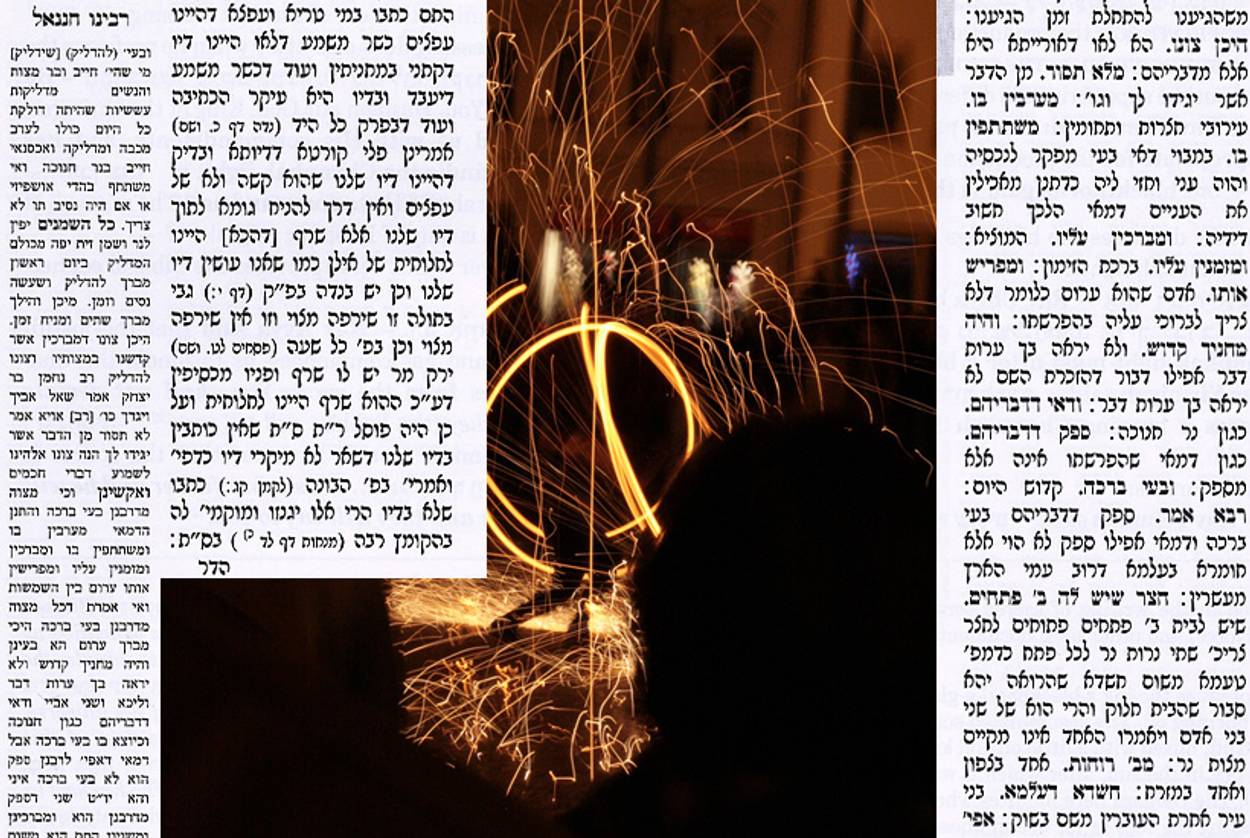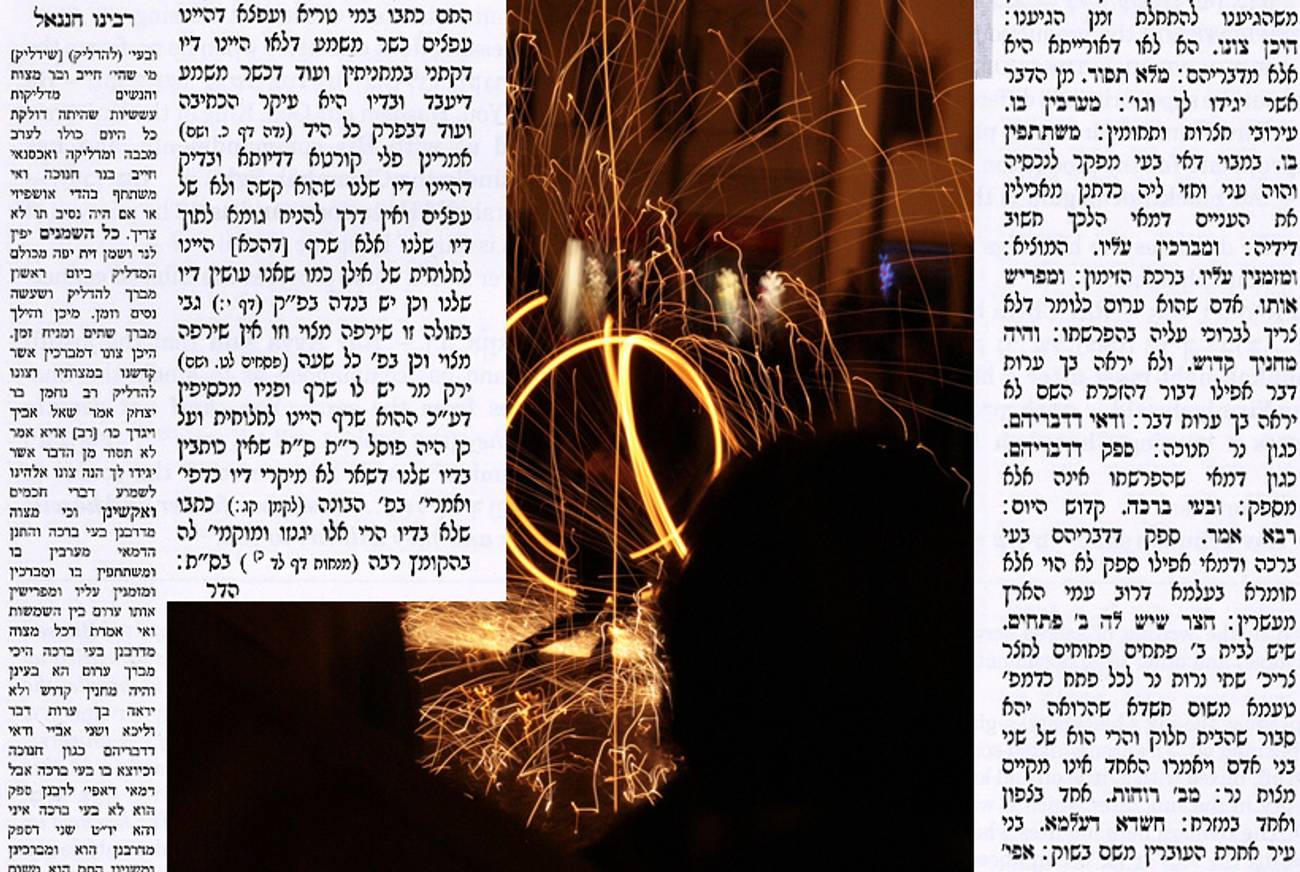Jugglers, Acrobats, a Magnificent Temple—and Notably No Political Strife
In the Talmud, nostalgic, biblical, divine explanations override accurate secular history and chronology




Literary critic Adam Kirsch is reading a page of Talmud a day, along with Jews around the world.
According to the French statesman Talleyrand, people born after the French Revolution will never know the real sweetness of life. This famous saying tells us something about the way 1789 changed society, at least for those at the top, but it tells us even more about the human tendency to idealize the past, to think of paradise as always a paradise lost. The rabbis of the Talmud were not immune to this kind of historical nostalgia, and in this week’s Daf Yomi reading they offered a Jewish version of Talleyrand’s phrase: “One who did not see the Celebration of the Drawing of the Water never saw celebration in his days. One who did not see Jerusalem in its glory never saw a beautiful city. One who did not see the Temple in its constructed state never saw a magnificent structure.”
The rabbis who compiled the Talmud from the third to fifth centuries C.E. were, of course, among those who never saw the Temple standing. But their imaginations and their inherited memories allowed them to draw wonderful pictures of what it must have been like. And the festivity at the Temple was never greater than during the Celebration of the Drawing of the Water, a ceremony performed every day during Sukkot. As we learned last week in Sukka 48a, a priest would fill a golden jug with water from the pool of Siloam and then bring it into the Temple and pour the water into two silver basins.
This week, in the fifth and last chapter of Tractate Sukka, the Talmud expanded greatly on its description of this ceremony. It was a moment for spectacle and rejoicing, a carnivalesque time when even the great men of the community, “the pious and men of action,” would juggle “flaming torches” while singing hymns of praise to God. It may be hard to picture the great sages whose words the Talmud treats with such reverence performing circus acts, but the Gemara confirms it: “They said about Rabban Shimon ben Gamliel that when he would rejoice at the Celebration of the Place of the Drawing of the Water, he would take eight flaming torches and toss one and catch another, and they would not touch each other.”
Even Shimon’s bowing down in prayer was turned into an athletic performance: “And when he would prostrate himself, he would insert his two thumbs into the ground, and bow, and kiss the floor and straighten,” presumably all in one movement. This image of prayer through celebration and exertion makes clear that the practices of Hasidism can claim a very ancient pedigree. And later rabbis, though they couldn’t witness the ceremony in the Temple, celebrated Sukkot with similar vigor: “Shmuel would juggle before King Shapur,” the Persian monarch, “with eight glasses of wine. Abaye would juggle before Rabba with eight eggs.” (Scrupulously, however, the Gemara notes, “Some say he did so with four eggs.”) If we tend to assume that the Tannaim and Amoraim must have been withdrawn, abstemious men, moments like this remind us to think again.
All this celebration would take place in the bright light of giant torches in the Temple courtyard. According to Sukka 51a, these were tall candelabra with basins made of gold. Children in training for the priesthood would climb up to the top on ladders and empty pitchers of oil into each basin, then light them using wicks made from the worn-out garments of the priests. This created a light so bright that “there was not a courtyard in Jerusalem that was not illuminated.” All this took place to the accompaniment of the trumpet blasts, the tekias and teruas we commemorate when we blow the shofar.
There could only be one Temple and one Jerusalem; but interestingly, and unusually, the Talmud digresses at this point to remember another splendid Jewish building, this one in the Diaspora. This was the great synagogue of Alexandria, in Egypt, which for centuries was home to one of the largest Jewish communities in the Greco-Roman world. (Its best-known product, the Greek-speaking Jewish theologian Philo, writes about the troubles the Jews had with their Egyptian neighbors in the city.) The synagogue must have been really something for it to be eulogized in the Talmud, which usually saves its reverence for the Temple:
One who did not see the great synagogue of Alexandria never saw the glory of Israel. They said that its structure was like a large basilica, with a colonnade within a colonnade. At times there were six hundred thousand and another six hundred thousand in it, twice the number of those who left Egypt. In it were seventy-one golden chairs, corresponding to the seventy-one members of the Great Sanhedrin, each of which consisted of no less than 21,000 talents of gold.
The synagogue was so large, we learn, that not everyone in it could hear the prayers being recited; when it was time to say “amen,” a sexton waved a scarf to signal the Jews sitting far from the bimah. And, like many later, less glorious synagogues, it was also a place for professional networking. Members of the same professions would sit together—goldsmiths with goldsmiths, silversmiths with silversmiths, and so on. “And when a poor stranger entered there, he would recognize people who plied his craft, and he would turn to join them there. And from there he would secure his livelihood.”
By the time the Talmud was compiled, the Alexandrian synagogue, like the Temple, was long gone, also having been destroyed by the Romans. But the rabbis’ account of what happened to it reveals the curious historical amnesia that we see again and again in the Talmud. The Talmud is, of course, deeply concerned with the past: There is no limit to the rabbis’ curiosity about the smallest details of the Temple and its rituals. But the Temple as the rabbis imagine it is essentially static, a world out of time in which the same actions eternally recur. About the wider historical context—the world of empires and states, wars and politics, which is always changing—the Talmud is surprisingly incurious, considering how deeply Jewish fate had been affected by it. The rabbis had the biblical stories and some fragmented folk traditions; beyond that, they felt no need for accurate history. The contrast with a historian like Josephus, who portrays the ancient Jewish world as a hotbed of political intrigue, is striking.
That historical confusion or indifference can be seen in Sukka 51b, where Abaye explains that all the vast Jewish population of Alexandria “were killed by Alexander the Great of Macedon.” This is a mistake from which the name of the city itself should have saved him, since of course the city of Alexandria was founded by Alexander in the first place; he could hardly have destroyed the city’s Jews before the city itself existed. (This is rather like saying that the city of Washington, D.C., was burned down by George Washington.) It was in fact the Roman Emperor Trajan who destroyed Alexandria’s Jewish community in the years 115-17 C.E., more than 400 years after Alexander lived, during a wave of Jewish revolts against the Romans that broke out around the empire.
The rabbis, however, had so little sense of chronology that the four-century error didn’t strike them. This becomes more understandable when we hear the Gemara’s explanation for why the Jews of Alexandria were slaughtered. It is because they violated the express commandment in Deuteronomy forbidding Jews to return to the land of Egypt: “ ‘You shall henceforth return no more that way,’ and they returned.” In fact, there was to be a series of thriving Jewish communities in Egypt over the next 2,000 years—Maimonides lived in Cairo in the 12th century—but Egypt remained, symbolically, the place from which the Jews were liberated in the Exodus, and God did not approve of them going back. For the Talmud, this kind of biblical explanation overrode secular history. There was no real reason for the rabbis to accurately remember secular chronology when the driving forces of history would always be divine.
***
To read Tablet’s complete archive of Daf Yomi Talmud study, click here.
Adam Kirsch is a poet and literary critic, whose books include The People and the Books: 18 Classics of Jewish Literature.
Adam Kirsch is a poet and literary critic, whose books include The People and the Books: 18 Classics of Jewish Literature.